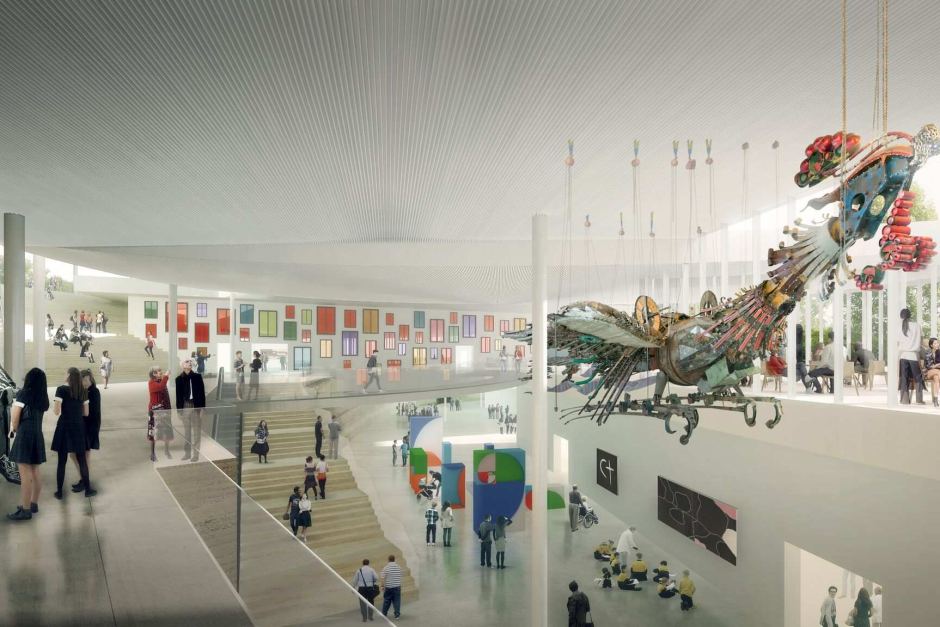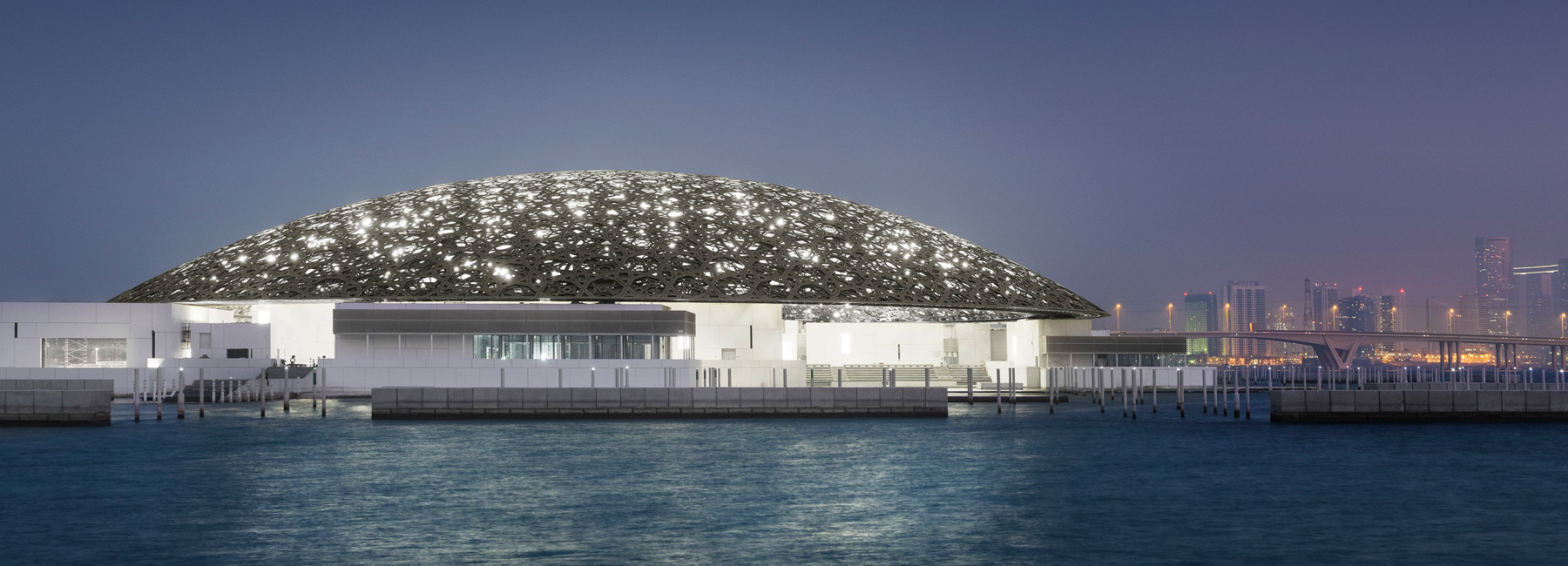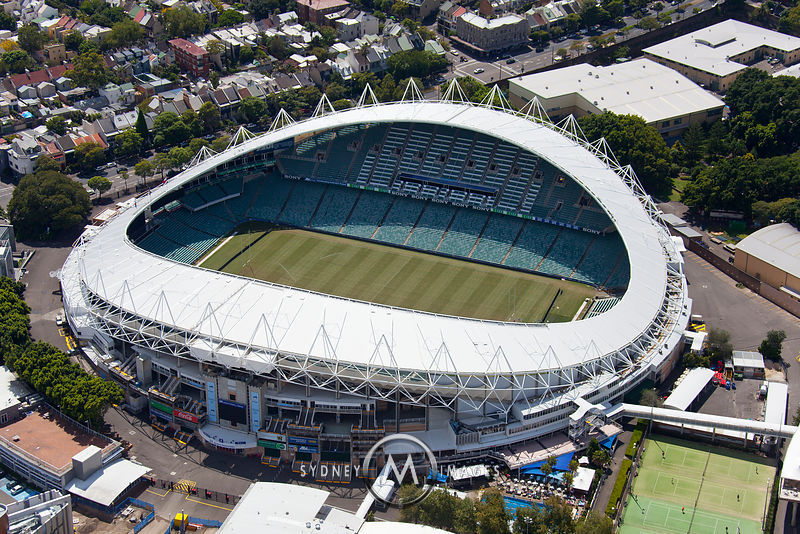Infrastructure spend and the corporate lobby
Rebuild Sydney’s sports stadiums at a cost of $2.3 billion? Gladys, you can’t be serious! It’s yet another ill-considered cash splurge of a kind all too familiar to supporters of cultural institutions. This isn’t just about sport – it’s about what the government is doing with taxpayers’ money.
On 23 November Premier Berejiklian’s NSW Coalition Government signed off on the stadiums plan, which has already blown out from the $1.6 billion envisaged by former Premier Mike Baird two years ago. The announcement was greeted with outrage from the Opposition and the public alike. The plan now includes the Allianz Stadium at Moore Park (pictured above), which is to be torn down and rebuilt with no extra seating, in addition to the original proposal to replace the perfectly adequate ANZ Stadium at Olympic Park and upgrade Parramatta Stadium.
Opposition leader Luke Foley has said the rebuilt Moore Park stadium will be “a white elephant stadium in the eastern suburbs of Sydney that won’t host the biggest games. It’ll be full once, possibly twice, a year … a massive waste of taxpayers’ money.” Sydney Lord Mayor Clover Moore also says the plan is “fundamentally inappropriate”. Even the sporting clubs are against it.
So why the change of plan? Clearly, there has been some heavy lobbying by the well-heeled members of the Sydney Cricket and Sports Ground Trust. They include not only Premier Berejiklian’s forerunner and mentor Barry O’Farrell but also right-wing broadcaster Alan Jones, former News Limited CEO John Hartigan and former Transfield chair Tony Shepherd.
And the Coalition government just loves a corporate lobby group. They announced the catastrophic plan to move the Powerhouse Museum from Ultimo to Parramatta at the request of the Western Sydney Business Chamber, and more recently committed $244 million to the pomposity on the harbour known as Sydney Modern after lobbying by the corporate heavyweights on the AGNSW board.
Construction contractors and the inevitable line-up of consultants are rubbing their hands at the prospect of the new infrastructure. The Coalition government is awash with cash from the sale of electricity poles and wires, for which consumers are paying the price, and from stamp duty in an unregulated housing market that’s making accommodation unaffordable for many Sydneysiders.
Rather than spend its billions on the latest vanity project proposed by the corporate urgers, a government that was serious about sport would invest the money in ensuring that every public school in the state had sports grounds and equipment to match those of the wealthy private schools – which have had more than their share of public funding. And a government that was serious about the arts would ensure that every public school had a decent art room and equipment, would increase funding to the State’s three art schools rather than push for their amalgamation, and would ensure that all cultural institutions had adequate recurrent funding.
The future funding headache for Sydney Modern

Digitised impression of the atrium at the proposed Sydney Modern
The annual report of the Art Gallery of New South Wales for 2016-7 has now been published. As you might expect, it makes much of the State government’s $244 million commitment to Sydney Modern, and of a reported increase in the Gallery’s visitor numbers to a record of almost 1.6 million – a figure which surprised even some staff there.
But a look at the AGNSW’s operating costs reveals a problem. Recurrent funding from the State government was only $23.8 million – exactly the same as two years previously, although operating costs increased in that time from $46.6 million to $51.8 million. And costs will increase a lot more if the new building, planned to almost double the Gallery’s footprint, gets the go-ahead.
Take the National Gallery of Victoria (NGV) which already has two sites. Its annual report for the past year shows operating costs of $93.8 million, to which government contributed $41.1 million. It’s hard to believe that costs at an expanded AGNSW would be less than at the NGV – so where is the recurrent funding to come from? So far as we know there is no increased commitment from the NSW government, which for years has been much less generous to the arts than its Victorian counterpart.
Even Queensland contributed more to its state gallery last year, funding $33.7 million of QAGOMA’s $55.2 million operating costs.
No doubt AGNSW management will be doing its best to hold down staff costs, as both the NGV and QAGOMA have succeeded in doing – the NGV reports a salary bill of $28.1 million, not all that much more than the Sydney gallery’s $24.7 million.
If the squeeze on wages continues, the AGNSW senior executive team are unlikely to feel the pinch – while the overall staffing budget scarcely changed, in the past year the executive team’s salary costs, not including travel and other expenses, rose to a whopping $2.5 million, compared to the NGV’s $1.4 million. It’s a trend we’re seeing throughout the arts, sciences, education and the media, where finance and marketing executives (read: number-crunchers and spin merchants) are prioritised over front-line workers.
Running and maintaining a new building, especially one with a program that will keep attracting visitors back, doesn’t come cheap. But the business case on which the Sydney Modern proposal hangs remains shrouded in secrecy, as does the original 2013 master plan for the project. This only fuels concerns that the plan is to run the extension as a money-making venue for hire – one with harbour views, hence the obduracy about its location.
Questions in the NSW Parliament about the project have been met by government with the kind of obfuscatory answers that might have been drafted by the scriptwriters of Rob Sitch’s Utopia. “Will the Government publicly release the 2013 Sydney Modern Master Plan?” was one of the questions asked by Member for Sydney Alex Greenwich on 19 October. The answer, delivered on 22 November, was: “The State Significant Development Application includes relevant information from the Sydney Modern Master Plan regarding the selection of the site for the proposed expansion.” Which doesn’t answer the question.
Opposition leader Luke Foley’s questions, asked on 12 October, have had similar responses. He asked what arrangements for the new building were being made with the Royal Botanic Gardens and Domain Trust. “The Art Gallery of NSW, Royal Botanic Gardens Trust and the Department are working collaboratively to determine the most appropriate approach for the project site.” In bureaucratic speak, that’s an “up yours”.
Another of Foley’s questions was about vehicular access to Sydney Modern. The answer? Drop-off zones and disabled parking would be available on Mrs Macquarie’s Road, as they are now, while the new loading dock would be accessed from the Woolloomooloo area. No new parking for the public, in other words, but fine if you arrive chauffeur-driven.
The development application (DA) for Sydney Modern has now been lodged. Don’t forget that you have until 15 December to have your say on the NSW Department of Planning website. (There’s more about this on the previous blog, which some of you may have missed because one or two popular email systems, for reasons unknown, consigned the newsletter to spam.)
Members of the public concerned about loss of green space, and about areas where cultural infrastructure is more urgently needed, have already lodged objections. But the number of responses is critical in order for a DA to be referred to the Planning Assessment Commission for more thorough consideration, so if you feel strongly about it, do take a few minutes to lodge your submission.
‘Iconic’ buildings and the people
You might think that the opening of the Louvre Abu Dhabi earlier this month is a sign of a progressive shift in the United Arab Emirates, following the establishment of the Museum of Islamic Art in Doha, capital of Qatar, nine years ago.
Not so, according to Iranian-French academic Alexandre Kazerouni in his newly-published book Le miroir des cheikhs (‘The sheikhs’ mirror’). He reveals that the new Louvre satellite’s main funding comes from the Offset Program Bureau set up 25 years ago to administer the monies foreign governments are obliged to invest in Abu Dhabi as a condition of being awarded arms sales contracts.

The new Louvre Abu Dhabi
Kazerouni argues that the new museums, rather than providing benefits to the people, are features of a tightening of authoritarian rule in the United Arab Emirates.
In a review in The Art Newspaper its London-based editor Anna Somers Cocks casts some doubt on his conclusion, which she regards as unproven, but she nonetheless writes: “Over the centuries, culture has always been a peculiarity in politics, the plaything of the powerful; it is no surprise to see the same happening in the Gulf.”
There are lessons closer to home in this. In modern Australia, we can’t allow our cultural institutions to become the “playthings of the powerful”. That’s not what they were established for. They’re not meant to be palaces of corporate entertainment. They exist to build specialist collections that belong to the people of the State and are accessible to everyone. It’s all very well to maximise commercial revenue to assist with their funding, but this must not come at the expense of their core mission.
Culture Heist special book offer – don’t miss out
It’s the perfect Christmas gift for an art lover. To spread the word about the crisis in our cultural institutions, the book Culture Heist is on special offer: order a personalised signed copy of Culture Heist online at a bargain postage-inclusive price. $27.50 for one copy, $50 for two. Place your order here.






Leave A Comment